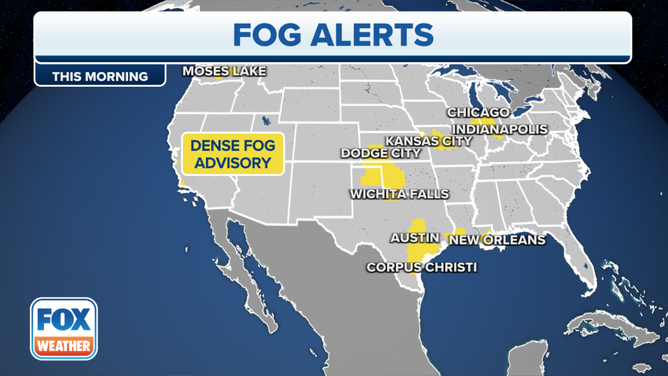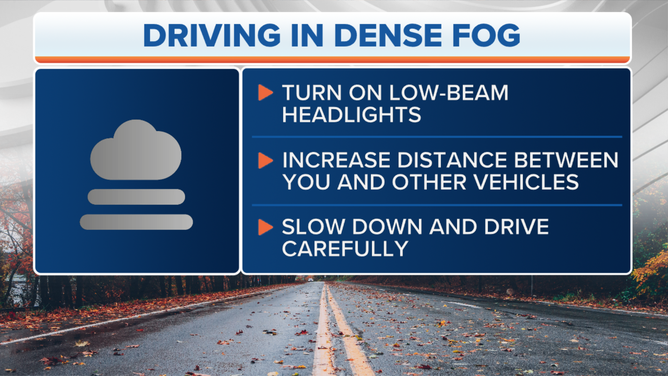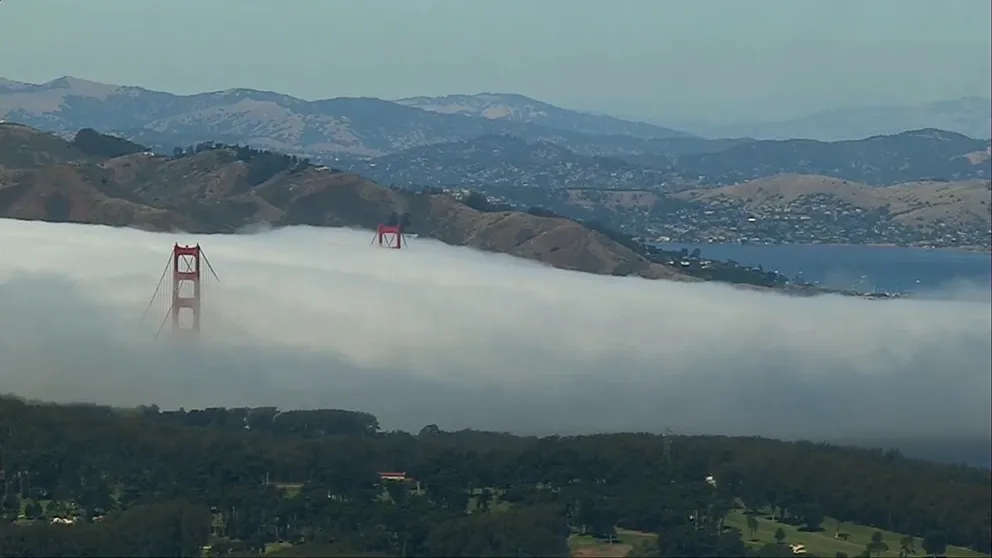17 million in dense fog Sunday morning: Why fog is an issue when the weather turns mild in winter
As winter weather takes a break across much of the U.S., Dense Fog Advisories covered over 17 million people Sunday morning in splotches across the nation, from Eastern Washington to South Texas up through the central Plains and back into Chicago and suburbs through northern Indiana.
5 peaceful shots of dense fog
Relax as you watch 90 seconds of dense fog move across the horizon.
CHICAGO - Winter weather has taken a break across much of the U.S. to kick off the week, with temperatures trending above average for nearly 75% of the nation. But with the mild weather comes a morning challenge: dense fog.
Dense Fog Advisories covered over 17 million people Sunday morning in splotches across the nation, from Eastern Washington to South Texas up through the central Plains and back into Chicago and suburbs through northern Indiana. "Dense fog" is considered when visibility is reduced to 1/4 mile or less.
260 MILLION AMERICANS FEELING FALL WARMTH WITH DOZENS OF RECORD-HIGH TEMPERATURES EXPECTED THIS WEEK

Dense Fog alerts for Nov. 5, 2023.
(FOX Weather)
Why is the mild pattern contributing to the fog? Clearing skies and warming air are ideal conditions for nighttime fog to develop.
For fog to form, the air at the surface must be cooled to the dew point – that’s the temperature at which the water vapor in the air condenses into droplets. It’s the same process that happens above the surface for the clouds floating above our heads.
Another factor that helps with the formation of fog is light winds. Breezes mix the air at the surface with air above it and usually prevent the formation of fog. In general, the more stagnant the air, the more likely it is for fog to form.
DOES FOG REALLY BURN OFF? DISPELLING THE MYTH OF COMBUSTIBLE CLOUDS
And right now, with the jet stream arcing way north along the Canadian border, the air pattern for much of the Lower 48 is relatively stagnant and skies are generally clear. With nighttime clouds lacking, the day’s warmth has an easier time escaping, allowing temperatures to cool to the dew point.

Warm temperatures will spread across the U.S. this week.
(FOX Weather)
But the Dense Fog Advisories usually expire in the mid-to-late morning time frame Why? It’s not because the sun ‘burns it off’ as is the popular phrase.
Once the rays of the sun hit the ground, the air just above the surface that contains the fog begins to warm. Eventually, the air warms above its dew point and leads to the evaporation of the murky droplets of water. Suddenly, the fog disappears.
How long this evaporative process takes really depends on how effectively the sun can heat the ground. If there are cloudy skies above the fog, it will take much longer for the gloomy conditions to improve.
HOW TO WATCH FOX WEATHER ON TV
Another process to erase fog involves mixing. When the sun begins to warm the ground, small currents of air called thermals begin to rise. Thermals take the foggy air with it and mix it with the drier air above the surface.
Keep those high beams off

Safety tips for driving in dense fog.
(FOX Weather)
If you find yourself in a dense fog advisory, be alert for dangerous driving conditions.
Aside from common sense driving tactics such as slowing down and making you’re not driving faster than you’ll be able to brake due to the reduced visibility, one of the more counter-intuitive tips is to only use low-beam headlights. While under normal conditions, high-beam headlights can increase nighttime visibility, during a dense fog, water droplets will reflect the light, making for even reduced visibility.
Use low beams and turn on your fog lamps, if your vehicle is equipped. Those lights sit lower to the ground in an effort to light the roadways below the fog bank.
